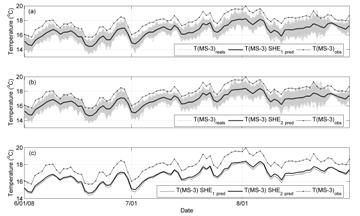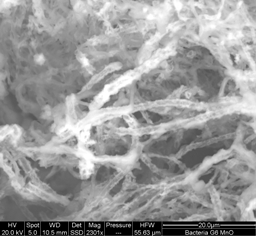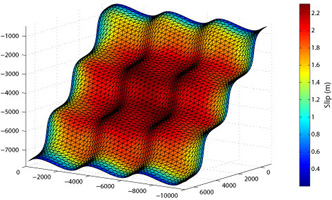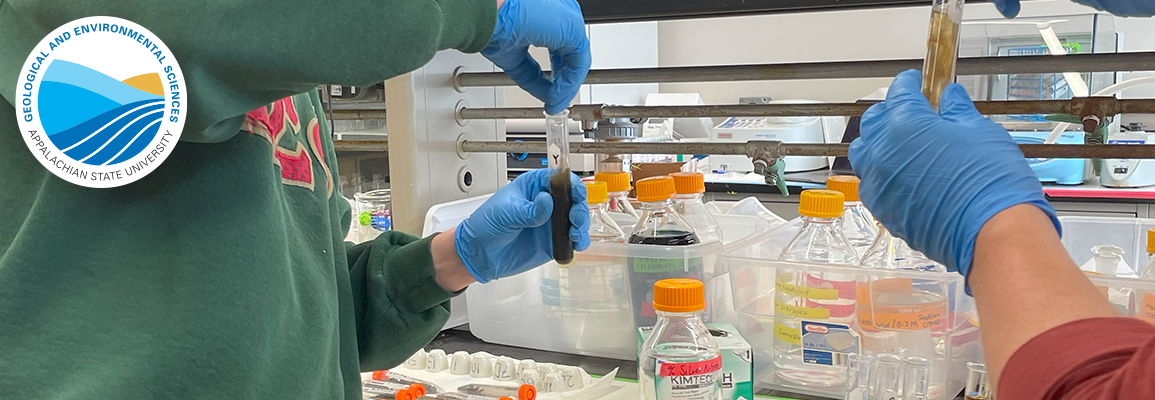As a Geology major at Appalachian, you will have access to a wide variety of laboratory equipment, both on-campus and off-campus, and state-of-the-art computational facilities.
Students in our department typically operate laboratory equipment independently in the course of their research, and are introduced to much of it while completing their 3000-level classes.
People

Dr. Bill Anderson uses computer modeling techniques as laboratories of his field and virtual sites in order to understand groundwater dynamics in mountain and coastal aquifers.
Dr. Billy Armstrong also uses computer modeling in conjunction with field surveys to track how glaciers move and change over time.
 Dr. Sarah Carmichael uses a wide variety of analytical equipment in her mineralogy and geochemistry research, including CL (cathodoluminescence) imaging, optical microscopy, scanning electron microscopy, transmission electron microscopy, ion chromatography, X-ray diffraction, FT-IR (Fourier Transform Infrared Spectroscopy), stable isotope analysis, and a variety of wet chemistry techniques. Her students work extensively with Dr. Drew Coleman (UNC-Chapel Hill) in the summer to perform stable and radiogenic isotope analyses (for more information about this collaboration, see http://devonian.appstate.edu).
Dr. Sarah Carmichael uses a wide variety of analytical equipment in her mineralogy and geochemistry research, including CL (cathodoluminescence) imaging, optical microscopy, scanning electron microscopy, transmission electron microscopy, ion chromatography, X-ray diffraction, FT-IR (Fourier Transform Infrared Spectroscopy), stable isotope analysis, and a variety of wet chemistry techniques. Her students work extensively with Dr. Drew Coleman (UNC-Chapel Hill) in the summer to perform stable and radiogenic isotope analyses (for more information about this collaboration, see http://devonian.appstate.edu).
Dr. Ellen Cowan's glacial geology research involves extensive use of the SEM in the The William C. and Ruth Ann Dewel Microscopy Facility, and her local research on stream terrace evolution in the High Country and coal ash spills in the southeast uses a number of other geochemical/geophysical techniques.
Dr. Cole Edwards uses geochemistry and modeling to make Paleozoic paleoceanography and paleoclimate reconstructions. This includes measuring carbon and sulfur isotopes and iodine:calcium ratios from limestones to understand changes in marine redox conditions, but he also studies radiogenic isotopes like strontium and lithium to understand weathering rates during the past. Quantifying these geochemical changes can be used to model how atmospheric oxygen and carbon dioxide have changed, particularly in relation to extinction/origination of marine life.This research is in part conducted using the newly acquired IsoPrime mass spectrometer, but also in collaboration with colleagues at Virginia Tech, Florida State University, and UNC-Chapel Hill.
Dr. Sarah Evans uses a variety of field instrumentation in addition to numerical modeling to track how groundwater moves through cold/frozen environments.
Dr. Steve Hageman uses light microscopy and scanning electron microscopy to investigate morphologic variation of fossil invertebrates (particularly Bryozoa).
Dr. Andrew Heckert notes that few people know that finding and collecting fossils in the field is just the beginning of the story and that sometimes the best discoveries happen in the lab. Students have picked through material collected in Arizona and North Carolina and brought back to Appalachian to find fossils of tiny animals that lived with dinosaurs (part of the Finding Fossils on Fridays, aka the "FFF" group). They then use the scanning electron microscope (SEM) and Keyence Digital Microscope to collect images of the fossils. Another important contribution students make is to prepare fossils, which is the process of removing unwanted rock and gluing bones or teeth back together. This is a crucial skill for vertebrate paleontologists, and Appalachian is fortunate to have access to preparation facilities in the Department.
Dr. Cynthia Liutkus-Pierce uses optical mineralogy and other methods (e.g., cathodoluminescence, scanning electron microscopy, X-ray diffraction, etc.) to investigate the volcanic origin of ash deposits in northern Tanzania, and thin section petrography and stable isotope geochemistry to reconstruct past landscapes.
 Dr. Scott Marshall uses a variety of computer programs and languages (Poly3D - a Boundary Element Method program, GMT - Generic Mapping Tools, and Matlab, among others) to better understand how the Earth deforms in response to tectonic stresses.
Dr. Scott Marshall uses a variety of computer programs and languages (Poly3D - a Boundary Element Method program, GMT - Generic Mapping Tools, and Matlab, among others) to better understand how the Earth deforms in response to tectonic stresses.
